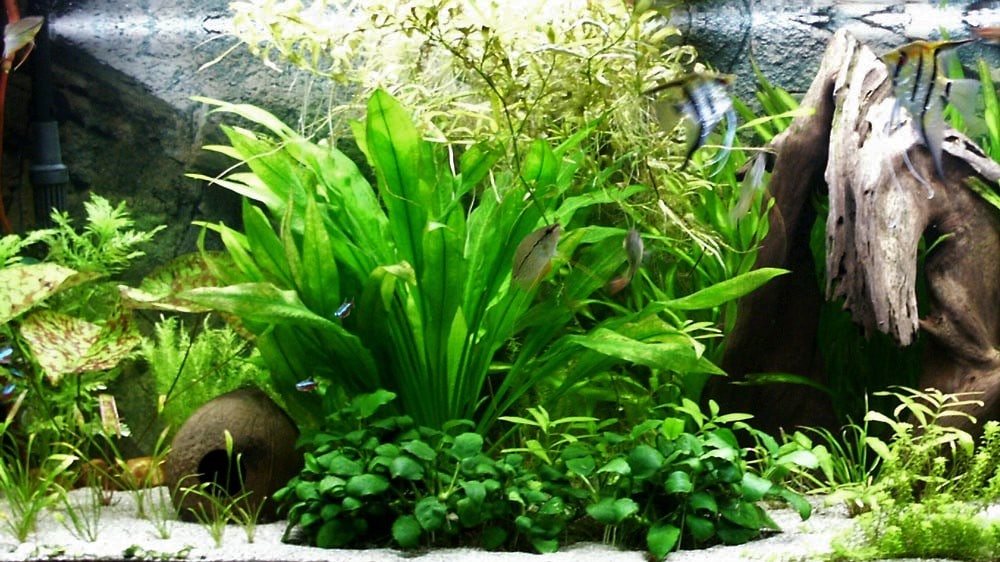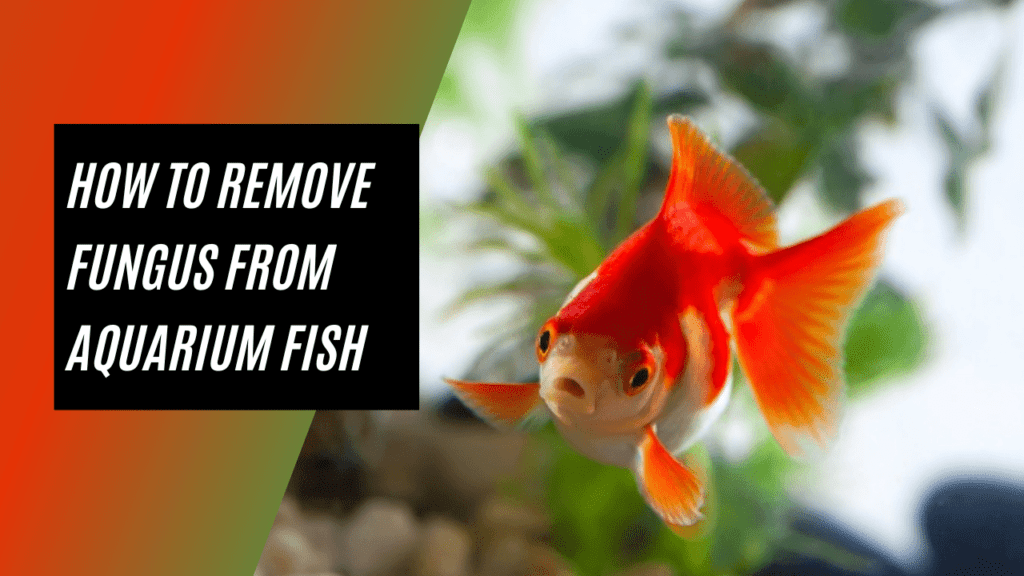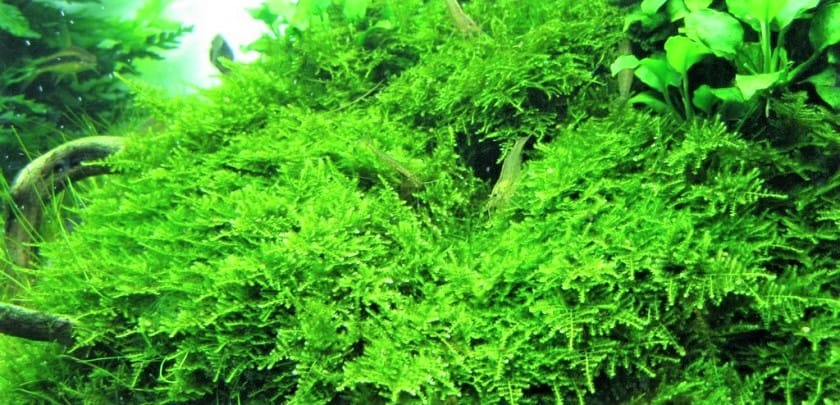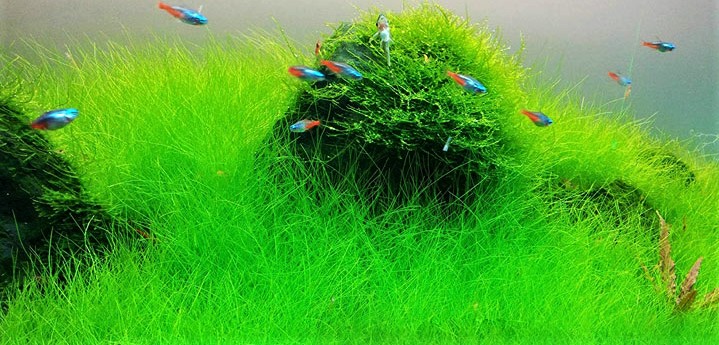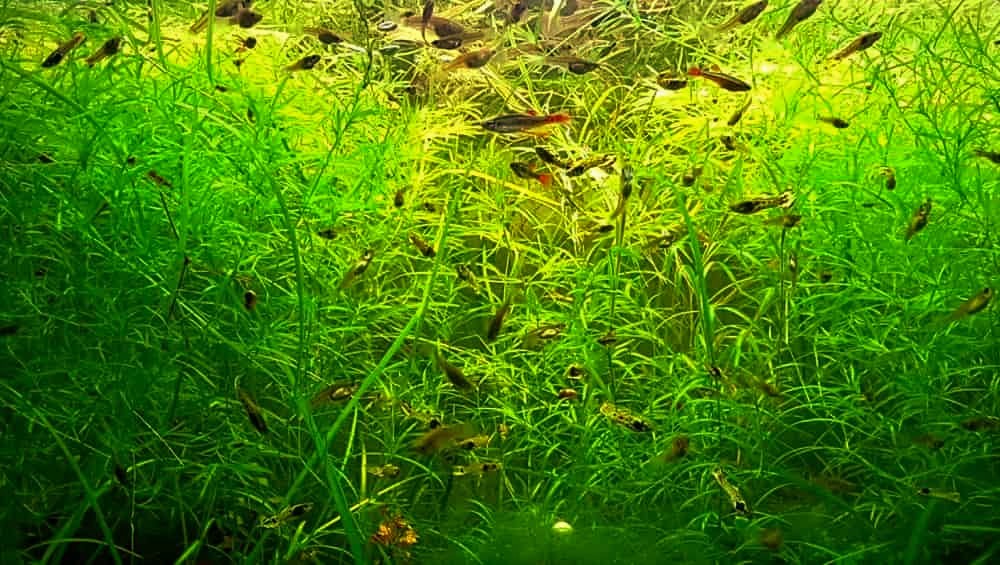Java Moss is also known by a few other names like Mini Moss, Christmas Moss, Singapore Moss, Dubious bladder moss, Triangular moss, and Willow moss. This article will discuss how to grow java moss and maintain its plants in an aquarium.
Origin and Description
It belongs to the Hypnaceae family; the origination for Java Moss is Southeast Asia, including Java, Japan, Indonesia, Malaysia, Singapore, Philippines, Vietnam, and the islands of the East Indian archipelago. It is mostly expected in moist tropical climates, usually seen growing on rocks, tree trunks, and river banks, even in stringent conditions. It is sold throughout the globe, both in shops and online. Also, it is one of the most common mosses used in aquariums. Moss gives a natural, aging look and can bring life to a bare and plain tank. Java Moss that grows underwater has bright green leaves, much smaller than the leaves that grow on land.
It is a fragile water carpet plant that can grow up to 4 inches( 10cm). It is crossing like leaves are light and bright green in color, which overlaps and engulfs the tiny stems, and grows up to 2mm. The plant can either float freely on the water surface or use its rhizoids to attach itself to the substrate, rock or driftwood, decorations, as well as to gravel or sand. Its leaves and stem absorb all the nutrients from their surrounding environment; It has no true roots and is one of the easiest to grow, relatively easy to install its almost impossible to kill it.
Great Durability
This is an utmost durable plant. There have been occasions where a plant has been forgotten in a bucket for over two months, and when after it was found, it was still alive and growing. It can grow with absolutely no light, and someone would rarely be unable to keep it alive. This is one of those plants which is great for beginners, and the light green color on the ends of the moss indicates new growth.
Java Moss Care and Maintenance
Keeping good water quality is one of the best water qualities you can provide for your Java moss. Periodic feedings with liquid fertilizer will promote new growth and keep your plant in outstanding condition. The ideal tank conditions include a good water current, soft acid water, and temperatures between 21-24oC.
However, it will tolerate temperatures up to 30oC. The only thing to note here is that the growth rate will slow the warmer the water is. In calmer waters of around 24oC, you’ll get faster growth and a healthier-looking plant.
On the bottom of the tank, Java moss is susceptible to accumulating waste, scrap, debris, etc., which can damage the plant life if large amounts build up. To avoid this from happening, you can remove the plant from the tank and rinse it well in water far away from spawning times. You don’t have to worry about being too rough with the plant, as it can bear sturdy strapping.
Possibly the most common problem encountered with Java moss is algae growth. Once the algae begin growing in the moss, it is almost out of the question to detach or separate the algae from the moss. The entire plant will have to be discarded or replaced with a new one. The supreme way of preventing algae growth is to avoid excessive light and keep the water clean. Elevated nitrates and phosphates, which tend to creep up when water changes aren’t performed regularly, encourage algae growth.
Java Moss Growth and Propagation
To start off with new plants, simply dissect pieces off the main plant and spot them in a new location. This plant is a slow-to-medium grower and is propagated by splitting and dividing. The division will cling on and attach itself to any surface by the use of root-like rhizoids. Nonetheless, these rhizoids do not absorb nutrients like roots; their only purpose is to attach the plant to another character. The stems and leaves perform the art of absorbing nutrition.
Java moss readily grows out of water. In any case, this is a non-vascular plant, so it must be kept soggy consistently, else it will dry out in the long run. First, however, it must be in contact with some supplement source. Submerged, Java moss gets its supplements from the water segment.
This specific plant is a slow to medium growth and is, for the most part, engendered through division. Given the best possible conditions, essentially severing a piece and connecting it elsewhere is everything necessary to get another plant. The division should begin developing in only a few days after it’s appropriately joined. To best engender, your Java moss, appropriate light, and CO2 and compost dosing are suggested.
On the off chance that your plant develops too quickly and maximizes your tank, it’s genuinely simple to trim the spreading parts, which would ordinarily develop on a level plane or vertically, relying upon the direction. Java moss plant divisions typically join through root-like rhizoids that don’t ingest supplements as roots and stems do. In this manner, nipping them is the most ideal approach to hinder the spread.
Various uses of Java Moss:
It is used by many freshwater aquarists for many different reasons. The most popular use of Java moss is Aquascaping, the craft of arranging aquatic plants, driftwood, stones, and rocks beautifully. Much like gardening, but underwater. It can also be used to paint a soft image of a rough aquarium. This plant provides your tank with a more natural feel and is very popular as a forefront cover for sandy or rocky substrates, and can grow effectively on any surface. Stunning carpets of Java moss are easily created by attaching them to a plastic mesh, which can be placed directly on the substrate or against the side of the aquarium to make a living wall.
It also provides a great hiding place for shrimp and so is very common amongst shrimp tanks. A mat of the plant is also an excellent option for egg-scattering fish. The eggs fall into the moss and are protected from adult scavengers. It makes an excellent cover for tiny fry and juvenile fish. Mature Java moss also supports the growth of Infusoria—the ideal first food for newly hatched fry.
It can also be used as a floating plant to provide a spawning site for mop spawning fish. Fish that build bubble nests, such as bettas, and gouramis, also enjoy clumps of floating Java moss. Allow some floating moss in addition to clumps on the substrate to provide lots of hiding places for fish.
Benefits of Java Moss:
Java moss is one of the most well-known freshwater aquarium plants, as it doesn’t have numerous prerequisites to become and is appropriate for most tropical fish that primarily live in freshwater. In contrast to some comparable plants, it can make due in a domain with low light power and endure a wide scope of temperatures, and it does well in many substrates. Java moss that develops ashore will in general create bigger leaves than those in water. Here is a portion of the top points of interest to add Java moss to your aquarium;
Reduces the number of algae:
The development of offensive algae growth in an aquarium can negatively affect the general glance and group out the open spaces in your tank, while Java moss takes the supplements the unfortunate green growth needs. Both algae and java moss depend on accessories, for example, iron and potassium, to endure. When you use Java moss in your aquarium, it contends with the algae for the supplements accessible. With time, the Java moss will starve the algae since it has a quicker development rate than algae. It’s imperative to take note that not every sea-going plant can kill algae in an aquarium, yet it will back their development off.
Reconstructs the Natural Environment:
Waterways and other freshwater streams are a portion of the principal wellsprings of fish. The stream bodies additionally have numerous kinds of sea-going plants. By adding Java moss to your aquarium, the fish will live in a domain like their regular environment, which may positively affect their development. Java moss can be utilized in aquariums containing a wide assortment of fish.
Aerates the Water:
Like some other sea-going plants, Java moss helps in the oxygenation procedure. Photosynthesis likewise happens in plants that get by in the water, for example, Java moss. The plant’s food-production process utilizes carbon dioxide and discharges oxygen into the water, which guarantees the endurance of the fish. The carbon dioxide discharged by the fish during breathing is utilized by Java moss during photosynthesis. There are different choices for guaranteeing appropriate air circulation, yet utilizing these plants is progressively compelling.
Secures Substrates in the Aquarium and Adds an Artistic Look:
Aquatic plants, for example, Java moss, have an all-inclusive root framework that can ensure the substrate in your aquarium. Since the water in the structure is changed now and again, the substrates might be upset. In any case, including Java moss holds the substrates set up in any event when the fish are moving near. The underlying foundations of the aquatic plants additionally encourage organic procedures in the substrates. Another critical purpose behind having Java moss in an aquarium is that it’s excellent when added to things like driftwood and rocks. Simply use a fishing line or ADA tying thread to secure the moss.
Common Problems with Java Moss
Java moss can use to cover filters, as we mentioned. However, this should be done with care because it can block the filter if it isn’t thawed regularly enough.
It can also take over your whole tank if it isn’t cut regularly. If the moss becomes too dense and complex, water cannot reach its middle section. As a result, it can turn brown and become detached from the tank.
Algae growth is the real problem facing java moss. Algae can grow rapidly in poor light conditions and under low water pressure. Therefore, it is tough to remove algae from moss.
If you’re determined to save the moss, you can use a soft toothbrush to brush it gently. Then, remove the algae. Just be careful not to pull up the moss.
Aquarists may recommend other chemicals to combat algae problems, such as Seachem’s Flourish Excel. While this will undoubtedly solve the problem temporarily, it is not a permanent solution.
Growing Java Moss Aquascapes
Aquascaping with Java Moss. The most popular choice is a Java moss wall and moss flooring carpet. Unfortunately, Moss trees are the most difficult to grow. However, I recommend it to anyone with a lot to spare and a willingness to experiment.
Java Moss Carpet:
You must ensure that you have the right tools and knowledge to plant a carpet properly. Then, anchor it to a non-floating, flat object. You can make a moss carpet look great by using character driftwood pieces and aquarium rocks.
You can join the moss with either cotton thread or a fishing line. Cotton threads can rot within a week, but they should be left in place.
A fishing line that does not rot is a good option if you are worried about the cotton rotting before the moss has properly attached.
To keep your aesthetics impeccable, use transparent colors or lines that aren’t too obvious. This will ensure that the plant doesn’t cover the entire driftwood or rock surface.
There are many layout options for driftwood. However, I recommend that you attach the moss to the area where the wood splits around your base.
Others attach the carpet to the substrate with a mesh net or sprinkle some substrate on top of the moss and allow it to grow.
No matter what method you choose, make sure that your moss is secure and weighed down.
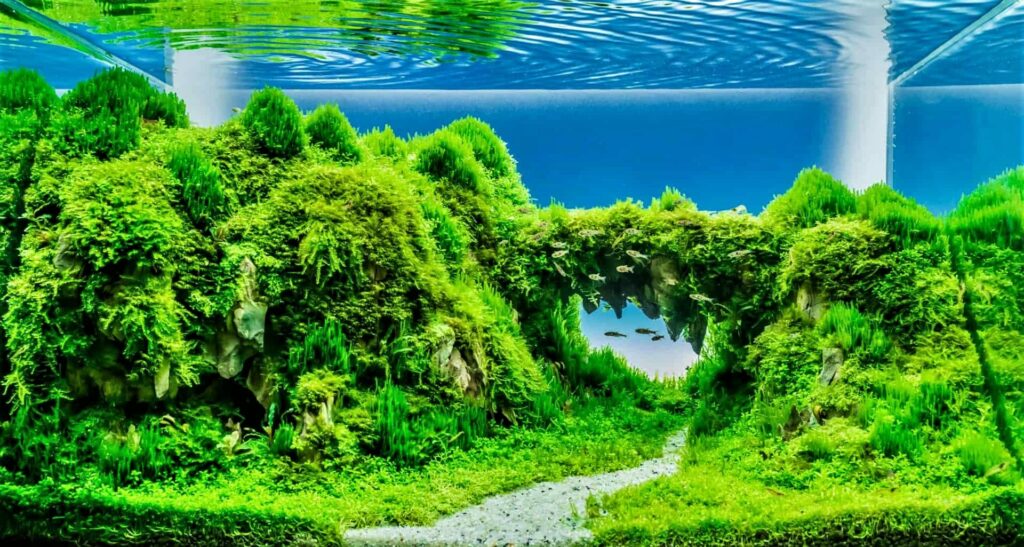
Java Moss Wall:
Most moss walls are used to decorate aquarium glass. You can use plastic mesh and suction cups to hold the netting to the tank’s surface.
You can use a net folded in half and attached to the aquarium using suction cups. Then stuff the moss into each end. Like driftwood, the moss can also attach to the mesh using clear cotton thread or fishing lines.
Because they have no obstructions to their light source, Java moss walls grow much faster than moss flooring. The moss wall can hide grasses with unnatural appearances, but regular trimming is necessary to keep it neat and compact. You won’t have to worry about your aquarium looking crowded.
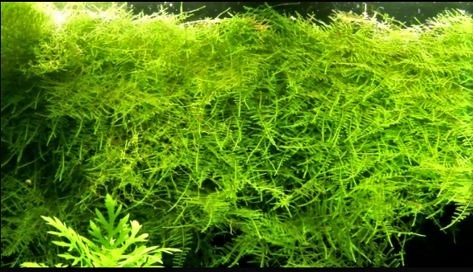
Java Moss Tree:
A piece of driftwood with several branches and small natural sponges is all it takes to grow a Java Moss Tree. The branches are attached to the gaps by gluing them, and then the moss is glued onto the sponges. You will trim the moss as it grows to get the tree shape you want.
Bamboo skewers can also use to tie Java moss onto the cotton thread. They trim the moss as it grows and then continues to do so until the skewer is like a tree.
Another option is to use three pieces of wood that, when combined, make a large tree. The largest piece should anchor in the substrate. It will serve as the trunk.
It is crucial to attach the moss so that the spread of the moss will attach to the smaller branches. However, it would help if you did not do this, as the moss strands can become free-floating and difficult to trim.
Also, it is essential to attach the moss mass to multiple branches. Otherwise, the undergrowth could become weaker and eventually die.
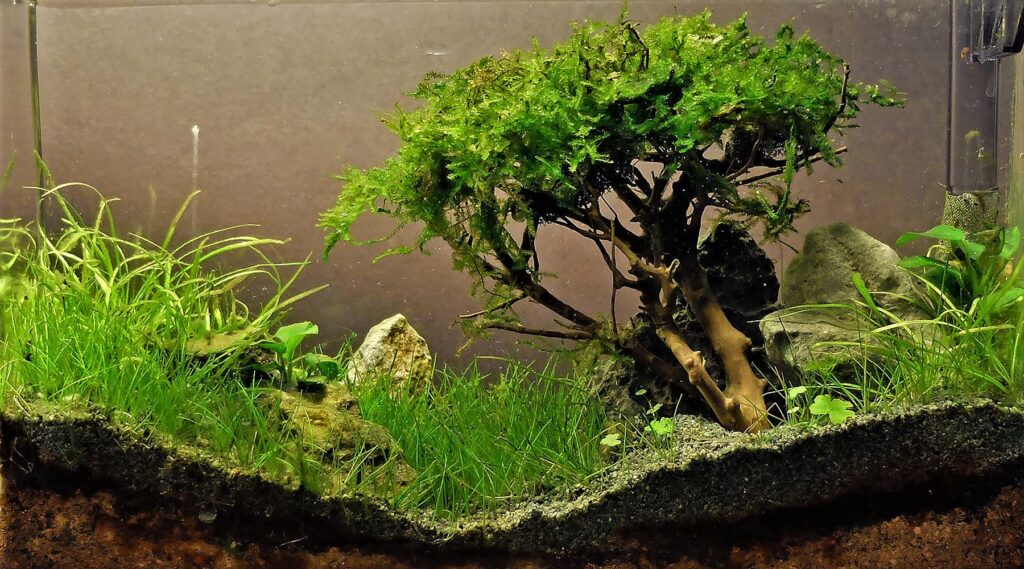
What Java Moss Needs to Grow
For the most part, Java moss is generally simple to introduce, care for and will become enough even with what is viewed as a brutal aquarium condition.
It’s, consequently, an extraordinary plant for apprentices and is perfect with most fish.
On the off chance that you are hoping to begin Java moss in your aquarium, this is all that you’ll have to know.
Water:
All plants need water to develop, and Java moss is no exemption, particularly now that it’s an oceanic species. In any case, it can’t get by for long in marine aquariums, so ensure you have a freshwater tank. The plant inclines toward delicate acidic water, which is new with a tolerably cool temperature. An aquarium situation somewhere in the range of 70°F and 75°F and a pH of 5.0 to 8.0 is adequate. In any case, Java moss will get by in somewhat salty water with a low salt substance. Faucet water should work fine also, yet you may need to include synthetic concoctions from an aquarium store to make it alright for your plants and fish.
Java moss is likewise most appropriate in moving water, with some specialists, in any event, developing the plant outside the tank in little, quick-moving rivulets or conduits. Along these lines, ensure the water in your tank is continually circling, or your plant won’t get enough supplements and begin to wilt.
Aside from helping your plant flourish, a very much circled aquarium lessens flotsam and jetsam that stalls out on the plant and gives it an earthy colored fluffy appearance. Which is everything except for fabulous. Unfortunately, the moving water also carries loose Java moss debris into the aquarium filter intake, which may clog and sometimes even damages the filter with time.
Lighting for Java Moss:
Like water, all plants need light to photosynthesize and develop, so the main contrast between Java moss and other aquarium plants is that it does not need much. Be that as it may, the more light you have, the quicker the development. So, all things considered, Java moss will do best in medium light, which is somewhere in the range of 2 and 4 watts for each gallon of fluorescent development light.
Having said that, if your plant is canvassed in algae, the most probable guilty party is an excessive amount of light. You should, along these lines, possibly utilize solid lights in case you’re C02 or supplement dosing. Something else, your aquarium will transform into an algae ranch.
Co2 and Nutrient Dosing:
Just like water and light is an essential element in photosynthesis, CO2, and nutrient dosing are also required to complete the process. You will only need to add CO2 and fertilizer if you need to speed up your Java moss growth, where periodic feeding with liquid fertilizer will promote new growth and keep your plant healthy.
How to Encourage Java Moss to Spread
Periodic feeding with liquid fertilizer will promote new growth and keep the most healthy and spreading continually. It’s also helpful to attach your moss in a way that allows it to apply. Encourage the root-like structures to grip onto spaces by adding cotton strings or fishing lines along the spread area. Reduce the frequency of trimming your moss as well. Java moss with unobscured light exposure like moss walls will spread faster than moss carpets that are not properly illuminated, so exposing your Java moss to light should, therefore, increase the spread.
FAQ’S For Java Moss
Java moss can use in almost any aquarium for many purposes, including sheltering newborn fry and providing aesthetic beauty in a tank.
It is easy to grow and maintain, and it is ideal for both men and women. Algae growth is the most common problem with Java moss. It isn’t easy to get rid of. It’s better to start over and make sure you check the light levels and conditions of your tank.
This is one of the most loved aquarium plants. Java mosses are easy to grow. So it is no surprise that it is one of the most widely used aquatic plants for aquascaping.
Like other aquarium plants, Java Moss will transform an aquarium into an ecosystem. Java moss can reduce ammonia, nitrogen, and nitrites. However, its primary benefit is the survival rate of baby shrimp. Java moss is a great place to hide young shrimp, and it also increases the area that shrimp can graze on.
The bottom of the tank can collect debris that could be ugly and even harmful to the plants. This moss can be removed from the tank and washed in warm water.
